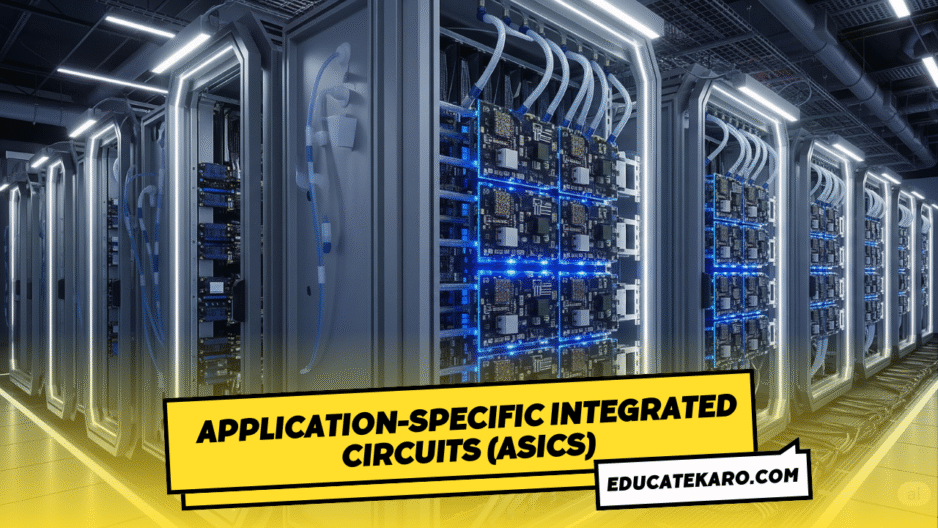As we move through 2025, application-specific semiconductors are shaping the backbone of digital transformation across every major industry. These chips—engineered for specific tasks rather than general-purpose computing—are now critical for powering artificial intelligence (AI), cloud infrastructure, automotive technology, healthcare, and next-gen consumer devices. Below, we explore what makes these chips game-changers, the drivers fueling their growth, key industry players, and how they are revolutionizing sectors from vehicles to data centers.
What Are Application-Specific Semiconductors?
Application-Specific Integrated Circuits (ASICs) are built to perform dedicated tasks more efficiently and faster than general-purpose chips. By focusing their processing power on targeted workloads such as AI inference, cryptographic tasks, or real-time health monitoring, these chips improve performance, reduce power usage, and offer better results for specialized applications.
Key Drivers of Growth in 2025
1. Rapid Growth in AI and Generative AI
AI is putting huge pressure on traditional chips, especially in data centers and edge computing setups like connected cars, industrial systems, and IoT. Generative AI requires high bandwidth and low latency, which general-purpose CPUs cannot handle well. This has opened the door for custom silicon built specifically for AI workloads.
2. Industry-Specific Demand and Customization
Major industries like automotive, telecom, cloud, and healthcare are turning to custom chips to meet their unique needs.
- Automotive: Companies such as Infineon, NXP, STMicroelectronics, Texas Instruments, Renesas, and Qualcomm are developing chips for ADAS, electric vehicles, and in-car connectivity.
- Healthcare: Texas Instruments, Analog Devices, STMicroelectronics, Ambiq, OmniVision, BioIntelliSense, and NVIDIA are supporting wearables, medical imaging, diagnostics, and remote monitoring.
- Cloud and Data Centers: Companies including NVIDIA, Intel, Broadcom, Samsung Semiconductor, IBM, Meta, Google, Arm, SambaNova Systems, and SiMa.ai are working on chips optimized for AI, high-speed networking, and cloud scalability.
3. Smarter Chip Design and Manufacturing
The rise of AI-based chip design tools and modular chiplet architectures has made it faster and more affordable to build custom chips. Advanced process nodes like 2nm fabrication and reusable IP components are helping reduce development time and cost.
4. Explosion in Edge Computing and IoT
As billions of IoT devices come online in 2025, there is growing demand for compact and power-efficient chips that can process data locally. These chips are key to enabling smart cities, connected health devices, and wearable tech.
5. Focus on Supply Chain Control and Strategic Independence
Global supply issues and geopolitical tensions have pushed industries to gain more control over chip design and production. Custom architectures and strategic partnerships are helping companies build resilience and avoid reliance on any single supplier.
Real-World Examples and Industry Leaders
| Sector | Leading Companies | Example Applications |
|---|---|---|
| Automotive | Infineon, NXP, STMicro, TI, Renesas, Qualcomm, Bosch, Samsung | ADAS, EVs, battery systems, in-car connectivity |
| Healthcare | TI, Analog Devices, STMicro, Ambiq, OmniVision, BioIntelliSense, NVIDIA | Wearables, diagnostics, telehealth, imaging |
| Cloud & Data | NVIDIA, Intel, Broadcom, Samsung, IBM, Meta, Google, Arm, SambaNova | AI acceleration, cloud computing, networking |
These companies are at the forefront of applying custom chip technology in real-world solutions, helping shape the future of innovation across industries.
Challenges and Considerations
Building custom chips comes with high research and development costs. However, tools and chiplet-based designs are reducing barriers for new players. The challenge now lies in balancing tailored performance with large-scale manufacturing. This is encouraging modular designs and partnerships across industries to make development more flexible and cost-effective.
What’s Ahead?
Technology is becoming more personal, intelligent, and efficient. Application-specific semiconductors are unlocking new levels of performance and control across sectors. Companies that invest in custom silicon are gaining strategic advantages and driving the next wave of innovation. From smart cars and medical devices to advanced cloud infrastructure, the future will be powered by chips that are designed for one job and do it exceptionally well.
Read more:
- Deloitte: 2025 global semiconductor industry outlook
- Semiconductor Industry Association (SIA): 2025 State of the U.S. Semiconductor Industry – PDF
- KPMG: Global Semiconductor Industry Outlook 2025 – PDF
- Infosys: Semiconductor industry outlook 2025 | Infosys Knowledge Institute
- Capgemini: The semiconductor industry in the AI era – PDF
- Coherent Market Insights: Automotive Semiconductor Market Size, Share and Forecast, 2025
- Technavio: Semiconductor Market In Healthcare Sector Size 2025–2029
- Yole Group: Data Center Semiconductor Trends 2025
- StartUs Insights: Top 10 Semiconductor Trends in 2025



